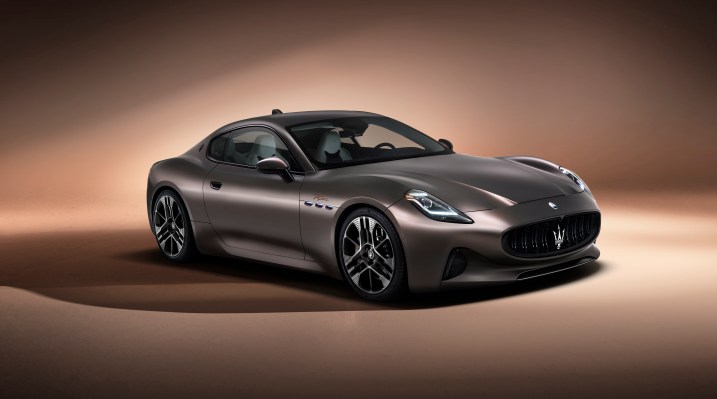How Formula E will shape Maserati’s first passenger EV • TechCrunch

When the 2024 Maserati GranTurismo Folgore comes to market next fall, consumers might notice some Formula E motorsports DNA running through the automaker’s first EV.
In January, Maserati will become the first Italian team to compete in the ABB FIA Formula E World Championship when the series kicks off its ninth season in Mexico City. The series serves as a testbed for manufacturers to experiment with the technology, including energy management, thermal management and battery design, that will eventually trickle down to their passenger cars. Like others, Maserati is taking what it learned developing an electric race car and integrating it into its passenger EV.
Maserati’s first EV, the GranTurismo Folgore, is expected to arrive next summer with a sub-$200,000 sticker price and pave the path for the Italian luxury sports car maker to go fully electric by the end of the decade. Two V6-powered versions of the GranTurismo are slated to arrive in showrooms in the spring.
The brand will add an all-electric Grecale SUV and Gran Cabrio GT to its Folgore (“Thunderbolt”) lineup next year, with battery-electric versions of Maserati’s MC20 Spyder, Levante SUV and Quattroporte sedan expected to follow mid-decade.
Where will this Formula E technology pop up? The company is pulling lessons (and tech) from at least three areas of its Formula E race car and integrating it into the Folgore.
Seating
The GranTurismo Folgore EV’s T-bone shaped battery pack allowed engineers to position the driver’s seat closer to the ground for better handling and aerodynamics.
The powertrain’s architecture positions the battery modules around the central body instead of beneath the seats as in a typical EV, to create one of the lowest seating positions for an electric passenger car. The lower center of gravity and 50:50 weight distribution help the driver change direction at higher speeds.
Inverters
The GranTurismo Folgore draws its energy from a 92.5 kilowatt-hour battery and a trio of 300-kilowatt motors – one in the front, two in the rear. But the car’s inverter, a key component of a car’s electrical system that converts direct current to alternating current, affects how the driver perceives the car’s 760 horsepower.
The motors use silicon carbide-based inverter technology derived from Formula E, a first in a production car. These inverters provide higher power density than traditional inverters while cooling the battery more efficiently.
Charging
Energy management is crucial in Formula E. Teams are not allowed to swap batteries mid-race, so the cars need to be able to travel up to 200 mph for 45 minutes on a single charge.
Motivated by the demands of the higher-performance Gen 3 car the series will begin using next year, Maserati’s 800-volt EV charging architecture has been designed to add 270 kilowatt hours in DC fast-charging, adding up to 60 miles in five minutes.
A successful performance in Formula E next year could create visibility for the GranTurismo Fologre and, by extension, the rest of Maserati’s EV lineup. We’ll tune in next year to see if the brand can claim a “win on Sunday, sell on Monday” victory.





Pingback: วิเคราะห์บอลวันนี้